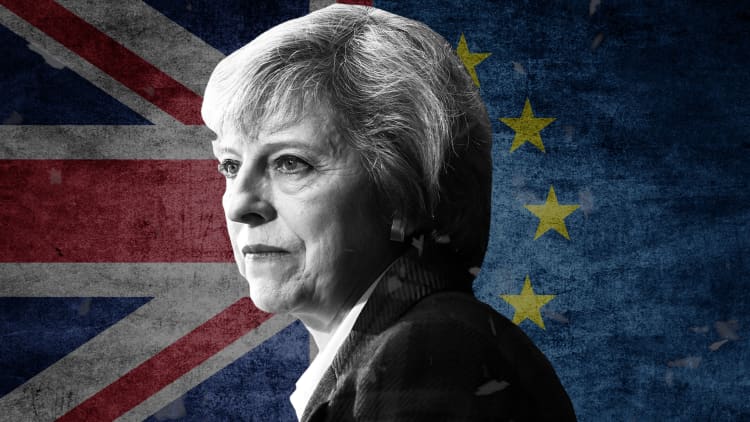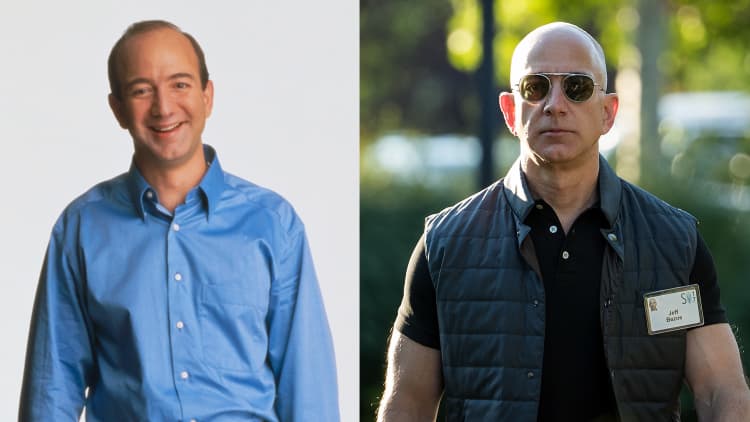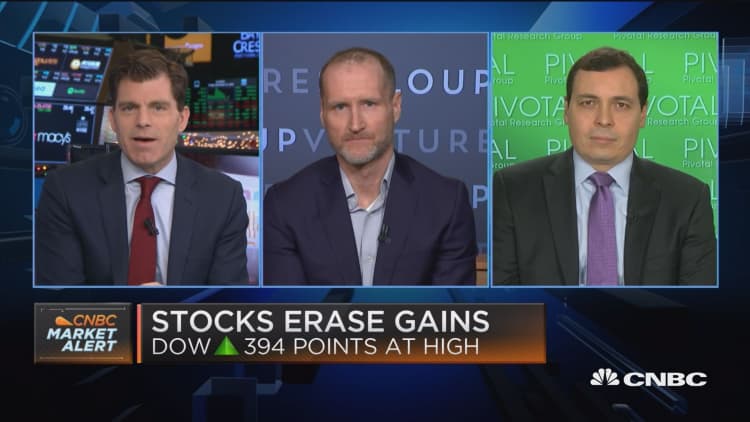Even after Wednesday's rally, the shopping season has been a disaster for Amazon investors.
Since the company's market capitalization briefly topped $1 trillion in September, the stock has been in free fall, losing 27 percent of its value in the last three months and putting it on pace for its worst quarter since the recession of 2008.
It's not a company-specific story. The stock market is tanking on concern about rising interest rates, slowing global growth and political instability. Tech is leading the downturn. Apple has plunged 30 percent this quarter and Microsoft has dropped 12 percent.
Facebook has slumped 18 percent, but for good reason. The social network has been bombarded by a constant stream of negative headlines related to the manipulation of its platform by foreign actors and the company's inability or unwillingness to adequately protect user data.
Amazon is facing some challenges of its own. In the most recent quarter, the company's cloud computing unit didn't grow as fast as analysts had predicted, and overall revenue fell short of expectations. Fourth-quarter revenue guidance was also disappointing.
The stock bounced back with the rest of the market on Wednesday, rising more than 9 percent to $1,470.90. Amazon didn't respond to a request for comment.
Europe may be dragging Amazon down, analysts from Baird wrote in a note to clients last week. British online retail group IMRG reported the slowest annual revenue growth in November since 2011, the analysts said. They also cited "weaker-than-expected revenue outlooks" from U.K. retailers ASOS and Sports Direct and Visa's report on a decline in consumer spending there, "reflecting uncertainty around Brexit."

The last time Amazon suffered a more dramatic loss was the fourth quarter of 2008, when the company lost 30 percent of its value. The only quarters with bigger drops were during the dot-com collapse of 2000 and 2001, when Amazon suffered declines of 33 percent or more four times, according to FactSet.
Amazon was hardly even the same company then. Amazon Web Services wasn't launched until 2006 and the Kindle e-reader came out a year later. Amazon Prime was introduced 2005. In 2001, Amazon had fewer than 7,800 employees, a number that climbed to 20,700 by the end of 2008. Today, the company employs 566,000 people.
Even after the stock's plunge, it's up 245-fold from 2001 and 29-fold from the end of 2008.
WATCH: Remember when Amazon's stock tanked 90%? Long-term investors still got rich

Quarterly revenue now exceeds $56 billion, while 17 years ago it was $700 million. Most of the revenue then came from sales of books, music and DVDs.
During 2018, we've grown accustomed to launches of Alexa-powered devices, the opening of cashierless stores and the release of new movies produced by Amazon Studios. In 2001, the company launched an online computer store.
"With the latest desktops and notebooks from leading brands like Apple, Compaq, Hewlett-Packard, IBM and Toshiba, the new store offers computer solutions for everyone from small-business owners, families and college students to gamers, road warriors, graphics enthusiasts, technophiles and others," Amazon said in a press release on Aug. 29, 2001.
So much has changed
Amazon would soon introduce a feature that let users "look inside" a digital book on its website, flipping through a few pages.
While the dot-bomb era was devastating to Amazon shareholders, the company was ultimately one of the few survivors, leaving it in position to win business as its counterparts withered. In the fourth quarter of 2001, the company's stock jumped 81 percent and it turned a profit for the first time. Bezos continued to expand and a year later started selling clothes in partnership with companies like Eddie Bauer and Gap.
Similarly, the first quarter of 2009 saw the stock pop 43 percent, rebounding from the prior quarter. During that period, the company introduced Kindle for the iPhone and iPod touch, and later that year bought Zappos.
In other words, Amazon has learned how to weather a downturn.
WATCH: Growth rates are slowing for tech sector, says Gene Munster



